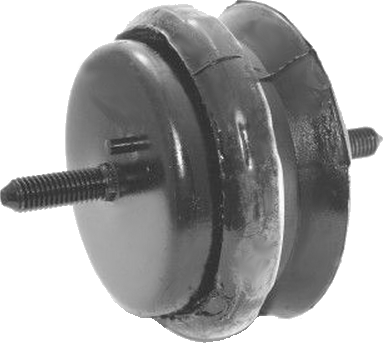
Engines need to be held in place but also tend to be shaky and produce torque in one direction, so engine mounts which can handle that, the weight of the engine, and keep the rest of the vehicle relatively smooth while the engine is in use are needed. These motor mounts (as well as transmission mounts) tend to consist of two metal components with rubber molded between them.
Worn Out Motor Mounts
Since most engine mounts have rubber cores, they tend to wear out with age or when motor oil comes in contact with it for prolonged periods. When the core is damaged, excessive engine movement relative to the rest of the vehicle will be observed or felt, and damage can occur; CV axles and other engine mounts are commonly affected when one engine mount fails.
How to Replace Motor Mounts Video by ChrisFix
High Performance Mounts
A high performance engine mount tends to be made out of stronger, longer-lasting materials, and can sometimes be made lighter if it is intended for track racing. Rubber is typically replaced with silicone or polyurethane. Silicone can resist oil damage much better than rubber can, and polyurethane is almost oil-proof.
In some cases, the soft core is done away with entirely, and the engine mount is made solid; this affects ride comfort, but since there is virtually no room for torque twisting, power is delivered to the drive wheels more quickly. In rare cases, motor mounts can be made which lower the engine or reposition it in order to improve handling or power delivery.
